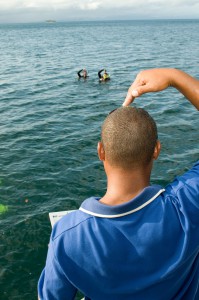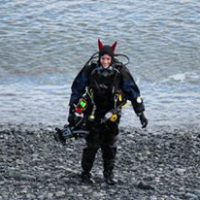
When you take the plunge under water, the world above the surface doesn’t pause; everything keeps moving, and in the unlikely event that the dive boat continues onward without you or you get separated from the rest of your dive buddies, you will need a way to attract attention. It is far more common, of course, that divers get distracted by the beauty of the reef and swim off-course, or get carried away by an unexpected current. When surfacing, they find the boat is way off in the distance.
While it certainly doesn’t happen often, no matter what the odds are, you will want to take every precaution when going out on any dive; staying safe should be a number-one priority. Signalling devices will help you become visible to your dive boat or other nearby surface traffic, so you can be picked up quickly and safely – as well as helping to signal distress to the boat or shore support in an emergency situation.
Depending on where you dive and what type of diving you do, you may prefer differing types of signalling device. It is recommended to carry at least two different types of signalling devices when going out on a dive: one audible and one visual.
Audible
- Whistle – a two-toned whistle designed for divers carries sound a long way over water and will alert boaters nearby to look for a visual marker.
- Horns – an air horn uses air from your tank to make a very loud noise that will certainly draw attention. However, because this relies on air from your tank, it is also prudent to carry a whistle in the event that you have an out of air situation.
Visible
 Inflatable signal tubes – these are inflatable tubes in vibrant colours (commonly red, orange or yellow) that stand tall above the surface around 1 meter high when deployed, but can be stowed neatly and discreetly in a pocket when not in use. Delayed Surface Marker buoys are similar but are attached to a reel and line and can be deployed from under the water.
Inflatable signal tubes – these are inflatable tubes in vibrant colours (commonly red, orange or yellow) that stand tall above the surface around 1 meter high when deployed, but can be stowed neatly and discreetly in a pocket when not in use. Delayed Surface Marker buoys are similar but are attached to a reel and line and can be deployed from under the water.- Signal mirrors – these reflect the light of the sun to attract attention and can easily be stored in your BCD pocket. As they rely on sunlight they can only be used during daylight hours.
- Strobes – signal lights are most effective for night dives. Many dive lights have an LED strobe option to allow the light to be used as a strobe whilst attracting attention at the surface.
- Rescue streamers – These are most effective for gaining attention from above, like from an airplane. The streamer fans out when deployed, floating on top of the water and forming a large visual marker.
Electronic
- Distress radio beacons – these are satellite-based transmitters which range in functionality from a simple radio communication with the dive boat through to issuing a full-scale distress signal to any nearby vessels in the event of an emergency.
Choosing the best signalling devices will depend on local regulations, the type of diving you’ll be doing and how remote you’ll expect to be. Visit your local PADI Dive Shop to learn more.
